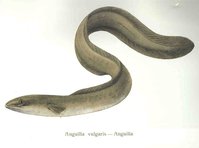The european eel
The European eel is one of 16 species within the family Anguillidae. It has a wide geographical range from Northern Norway to North Africa and the Mediterranean, and can be found in a broad range of aquatic habitats with varied salinities. Similar to other anguillid eels, they exhibit facultative catadromy; they are also panmictic and semelparous.
To date there are still no exact data about specific spawning sites. In 4BC, Aristotle claimed that eels reproduced by ‘spontaneous generation’ however, from, and building upon, work carried out by Johannes Schmidt in the early part of the 20th Century it has been deduced that spawning takes place in the Sargasso Sea, in the West Central Atlantic. The Sargasso has long been recognised as unique oceanic system, providing habitat for migratory and endemic species alike.
These life history traits mean that they are susceptible to a range of threats, both in the marine and freshwater environments, and are challenging to manage and conserve. There is significant concern for the status of the species due to a decline in recruitment, population and escapement over the past four decades, and it is presently listed as ‘Critically Endangered’ on the IUCN Red List and in Appendix II of both CITES and CMS. European Union legislation was imposed in 2007 to ensure all member states had developed Eel Management Plans, to address these declines; however, to date, the concern relating to the species’ abundance amongst stakeholders remains.


